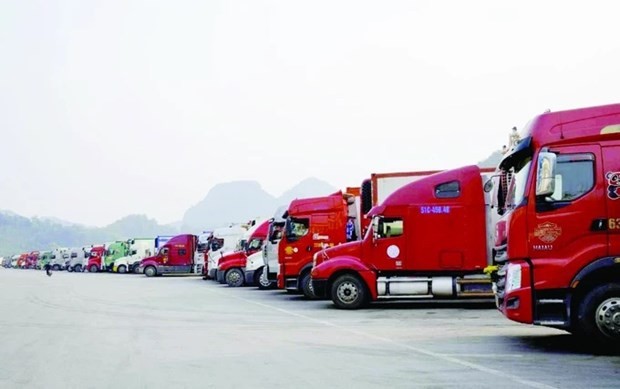
Farm exports to China expected to continue uptrend: GSO
Latest
During the first 11 months of 2023, China, the US, and Japan were the three largest markets of Vietnamese agro-forestry-fishery exports. China made up 23.2% of the total and posted a year-on-year increase of 18%, becoming the biggest buyer of those products from Vietnam, according to the General Statistics Office and the Ministry of Agriculture and Rural Development (MARD).
Deputy Minister of Industry and Trade Phan Thi Thang said that among the farm produce, total fruit and vegetable exports hit 5.32 billion USD during the period, soaring 74.5% from a year earlier. They were followed by the overseas shipment of rice, which grew 16.2% in volume to 7.75 million tonnes and 36.3% in value to 4.4 billion USD.
 |
| Lorries wait for customs clearance at a border gate in Lang Son province to carry farm produce exports to China. (Photo: sggp.org.vn) |
Dang Phuc Nguyen, Secretary General of the Vietnam Vegetable and Fruit Association, held that 2023 was a year of bumper fruit exports, especially durian the export of which to China shot up by 161.8% at certain points of time.
Vietnamese authorities are boosting negotiations with China to export frozen durian and fresh coconut via the official channel to this neighbouring market, he noted.
Besides, sales of rice to China have risen sharply, by 55.2% year on year during the 11 months. The same upward trend has also been recorded in the shipment of cashew nuts, coffee, and animal feed to this market, by 11.4 - 42.3%, statistics show. Without market uncertainties, Vietnam’s fruit and vegetable exports may surpass 6 billion USD in 2024.
Le Thanh Hoa, Deputy Director of the MARD’s Quality, Processing and Market Development Department, said China has licensed 12 fruits and vegetables of Vietnam to enter its market via the official channel. The Chinese General Administration of Customs has announced the list of over 800 Vietnamese fishery processing businesses eligible to export fishery products to China, and also approved product codes for 40 live crab and lobster packaging establishments, five others packaging black tiger and white-legged shrimp, along with 128 aquatic products and 48 species of Vietnam.
This is a condition for Vietnamese firms to access and continue stepping up exports to the market of 1.4 billion people, he opined.
While aquatic exports fell 18.9% year on year during January - November as reported by the MARD, the Vietnam Association of Seafood Exporters and Producers (VASEP) said China remains a key market for many fishery products.
About 30% of Vietnam’s tra fish export revenue comes from China. Vietnam is the seventh supplier of fishery products for this major market this year.
Director of the MARD’s Crop Cultivation Department Nguyen Nhu Cuong noted apart from fruits, Vietnam is also exporting winter farm produce to China, adding that as the neighbour suffered from prolonged downpours and flooding in many localities this year, it has high import demand.
MARD Deputy Minister Hoang Trung said to secure sustainable farm produce export to China, it is necessary to boost cultivation planning, grant more production unit codes, and ensure quality to increase export via the official channel. The MARD and related ministries and sectors will promote negotiations to sign protocols on farm produce export to China and potential markets.
Thanks to those protocols, Vietnam has witnessed record growth in the export of many farm products to China. So far, 13 agricultural products have been shipped to the market via the official channel, namely salangane nest, sweet potato, durian, longan, rambutan, mango, jackfruit, watermelon, banana, mangosteen, lychee, passion fruit, and durian.
Deputy Minister of Industry and Trade Thang affirmed that her ministry will keep coordinating with the MARD to negotiate with Chinese authorities to open this market to more fruits from Vietnam such as green-skinned pomelo, fresh coconut, avocado, pineapple, star apple, lemon, and honeydew melon.
In addition, relevant agencies on both sides will work to control the speed of customs clearance for seasonal agricultural and fishery products at the two countries’ border gates and accelerate the shift to export via the official channel.



















